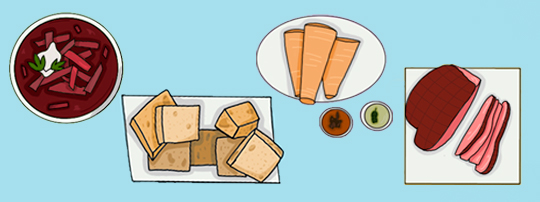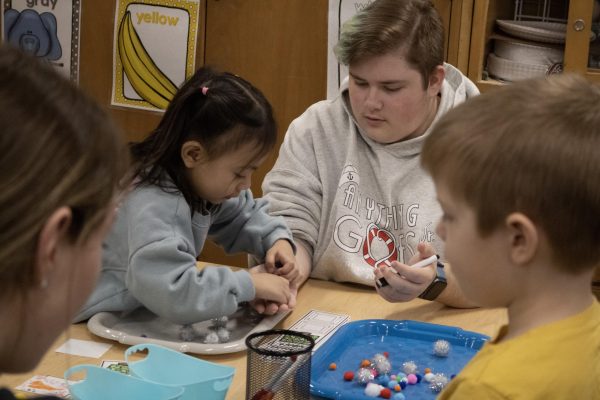South students get a taste of their heritage through traditional foods

Illustration by Mia Carr
December 18, 2020
When sitting around the dinner table with her family, senior Marina Markovic often enjoys a mouthwatering Serbian dish known as gibanica. With an alluring smell and a cheesy, crispy taste, this dish is what Markovic describes as “simply the best thing ever.” Like Markovic, many students at South who come from various backgrounds connect with their cultures by enjoying various delicious traditional foods.
Markovic connects with her personal cultural background by enjoying another traditional Serbian dish, commonly known as pita. Pita is made of filo dough, which serves as the basis of many Serbian foods, and there are many types of pita that can be sweet or savory, Markovic explained.
“We’re Serbian, so we cook a lot of traditional Serbian foods at home, my favorite being pita,” Markovic described. “It’s just the best, crispiest thing you’ll ever eat.”
Markovic enjoys the meal for its delicious taste and for the memories she has with it. Markovic recalled her childhood memories of cooking and eating the meal with her Grandmother as a young kid.
“I would sit under the table and when she was making [pita],” Markovic said. “She would always give me raw filo dough to dip in butter and it would just be the best thing ever. And when it comes out the oven, I would just eat some pieces off the top.”
Enjoying food that is served buffet style, junior Regan Koh combines her American and Korean culture through the foods she and her family make and enjoy together. There are many different dishes that her Korean side of the family eats for Thanksgiving, along with some traditional Thanksgiving dinner dishes as well, Koh explained.
“My dad makes Kobe which is a way to cook beef,” Koh said. “Then my cousins usually make Tempura which is deep fried shrimp with vegetables. Then we have Kimchi jjigae which is kimchi stew with tofu.”
A dish that senior Brianna Chirayil enjoys making from her Indian background is dosa. There are different ways to make it, and is often served with chutney and sambar, two sauces originating from India. Dosa is commonly served as a casual food in India and is made of a dough that is similar to that of crepes.
“[Dosa] is famous and it is from Kerala, which is where my parents are from,” Chirayil said. “People call it Indian crepes.”
Chirayil explained that being able to try this dish when traveling to India helped connect her to her cultural background. Many other different foods of her Indian background help Chirayil do this as well; however she cherishes her memories of when she first enjoyed dosa with her family.
“That was the first time I tried [dosa],” Chirayil said. “That [occasion] gives me a lot of good memories [because] it is where I really fell in love with [dosa] because it was like a trip to India and was handmade.”
Like Chirayil, sophomore John Tirpak vividly described a few of the common foods that come from his Polish background, including barszcz, a traditional Polish soup that his family serves on Christmas Eve. Barszcz, also known as borscht, is common in Eastern Europe and Northern Asia. Its main ingredient is beet root which is then mixed with an assortment of ingredients.
As part of tradition, Tirpak’s family eats this meal with 11 other dishes. During Christmas dinner, they eat a total of 12 dishes representing the 12 Apostles, Tirpak said. The meal includes a lot of symbolism, Tirpak explained, and focuses on the first star in the sky, which represents the star that led the three kings to Bethlehem.
“The meal starts when the first star comes out,” Tirpak said. “Everyone is outside looking for the first star to come out.”
There are many aspects of the cultural significance to this Polish meal. It is supposed to be good luck when eating from each of the 12 dishes that are served, Tirpak included. Tirpak elaborated that some of the common foods of his Polish culture are personally significant to him and that they have connected him to his family and culture.
“It’s really brought us together,” Tirpak said. “I remember evenings in the kitchen where I’m with my brothers and sisters and we’re all cooking our dishes while talking and listening to Christmas music. It definitely has a lot of memories.”











